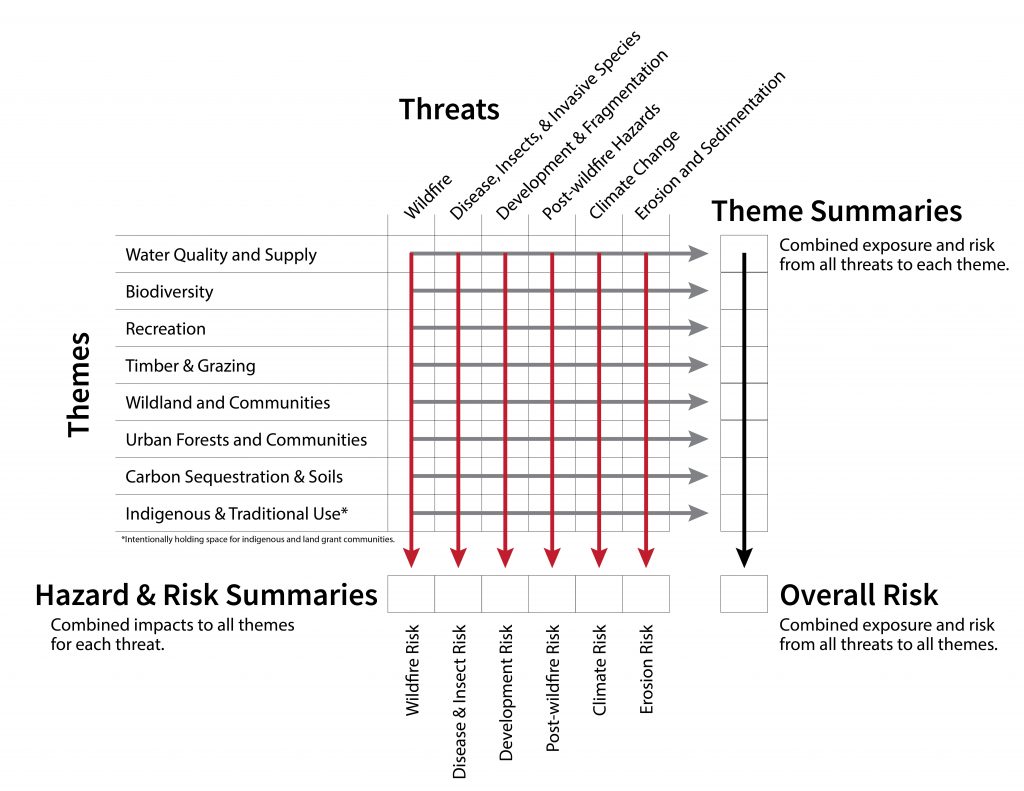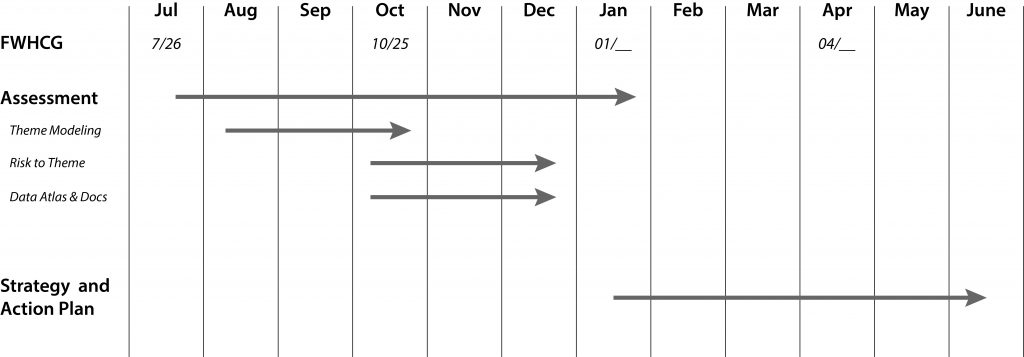The 2020 New Mexico Forest Action Plan (FAP) is now available!
Any questions related to the 2020 Forest Action Plan or its use with grant proposals, please email Andrew Frederick at andrewg.frederick@state.nm.us.
All data developed during the FAP process is documented in the data dictionary and available in this geodatabase. An atlas of maps is also available.
Now, more than ever, the connections between New Mexico’s communities, and the natural resources that sustain them are visible. From healthy watersheds flow rivers and streams that fill acequias and quench the thirst of downstream cities. Scenic vistas and recreation opportunities drive tourism and improve our quality of life. Hazards like wildfire threaten these things we hold dear. In the 2020 Natural Resources Assessment and Forest Action Plan, these connections between resources and beneficiaries will be explicitly mapped, and the threats like wildfire will be mapped. Priorities for investment to protect the things we care about and mitigate threats will also be identified.

Through this project, experts from across the state will be convened to guide the collection of data characterizing the resources we value and the threats to those resources. Using the best available science, the places where investment in forest management is needed will be identified.
Mandated by the 2008 Farm Bill, every state must complete a forest action plan every ten years. The Nature Conservancy has been contracted by State Forestry to complete the 2020 Forest Action Plan by June 30, 2020.
Approach
To ensure consistent mapping of New Mexico’s natural resources and the threats facing them, an ecosystem services approach will be employed where the sources of ecosystem services, and their beneficiaries, as well as the threats facing them will be mapped. For example, to map the value of watersheds across the state, the source of water will be mapped, as will the places where water is used. By weighting the supply of water by the relative level of benefit, the most important watershed can be mapped.
The maps of value for each resource will be overlaid with data characterizing the risk to that resource from six threats (wildfire, post-wildfire hazards, climate change, disease and insects, development, and erosion). To identify areas where investments in protecting our resources would have a high return on investment, models of activity cost (including operational constraints and community support) will be used to identify places where management actions will have a high return on investment.
The valued resources in the state will be grouped in to “themes”. For each theme, a technical panel of subject matter experts will be convened. From each theme, one or more sets of data describing the distribution of value across the state, the threats facing that resource, and the responses to each threat will be developed. This approach was pioneered during development of the 2010 Forest Action Plan, though slight changes will be made in the approach to ensure consistent and comparable output from each theme.

Timeline
Because the Forest Action Plan must be completed by the end of June, 2020, work is already underway. The natural resources assessment will be completed by the end of January 2020. The quarterly meetings of the New Mexico Forest and Watershed Health Coordinating Group (FWHCG) will be used to report on progress and solicit feedback on the development of the Natural Resources Assessment and Forest Action Plan.

Opportunities for Engagement
The Forest and Watershed Health Coordinating Group (FWHCG) meetings are the best way to stay up to date on the development of the FAP. Please contact Susan Rich for additional information about these meetings. Subject Matter Experts who wish to contribute to the mapping of resources across the state should contact Steve Bassett.